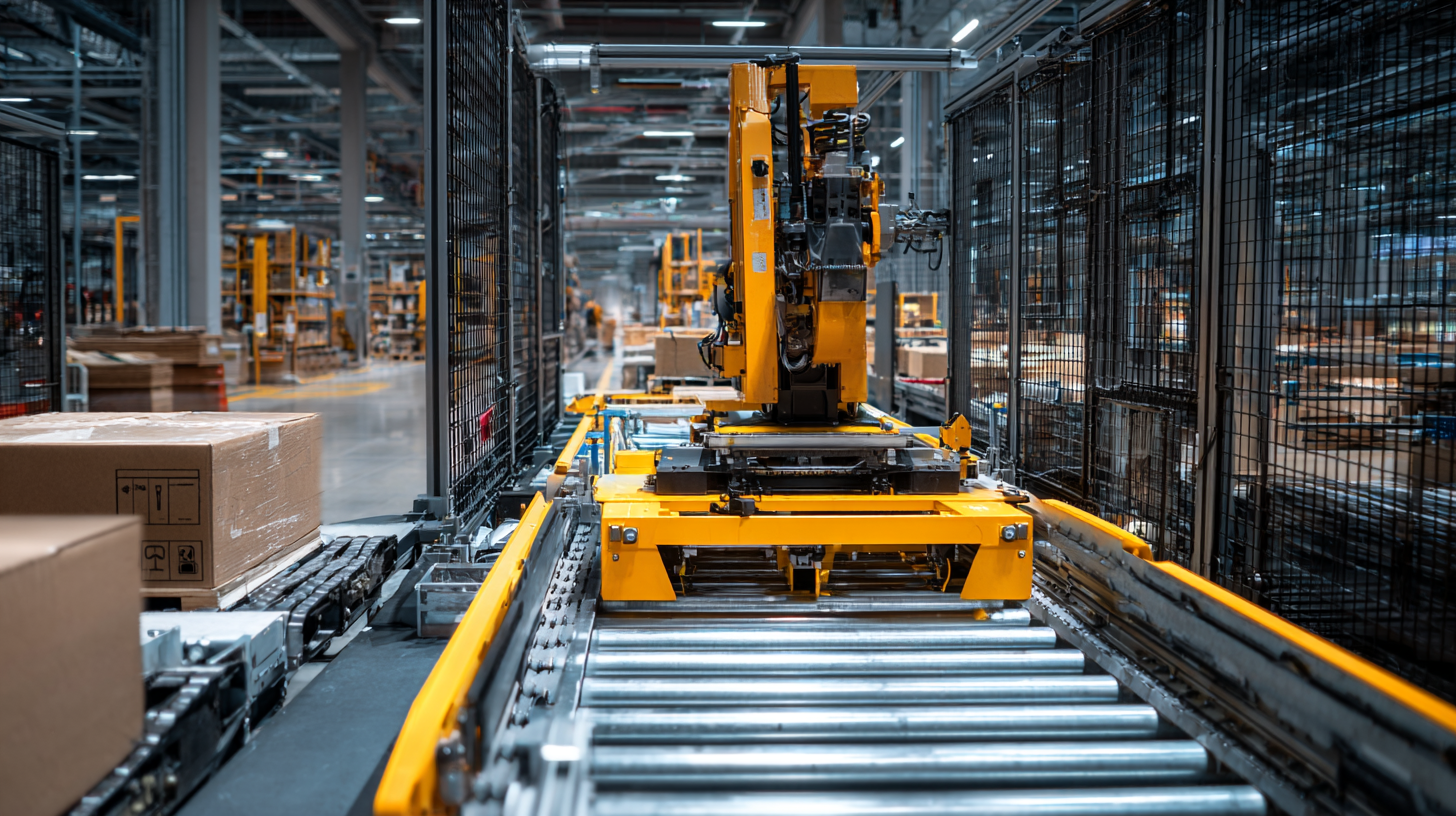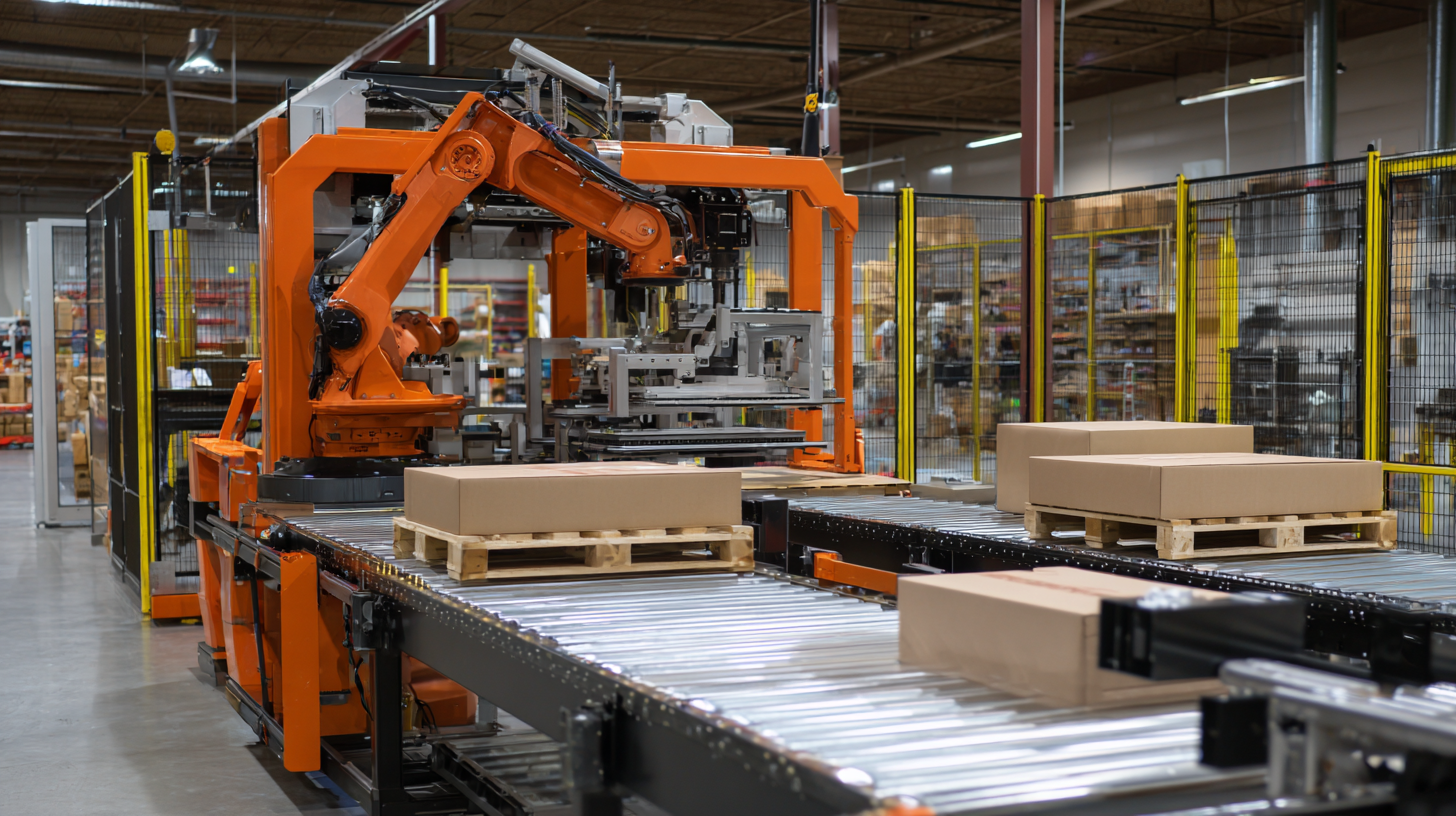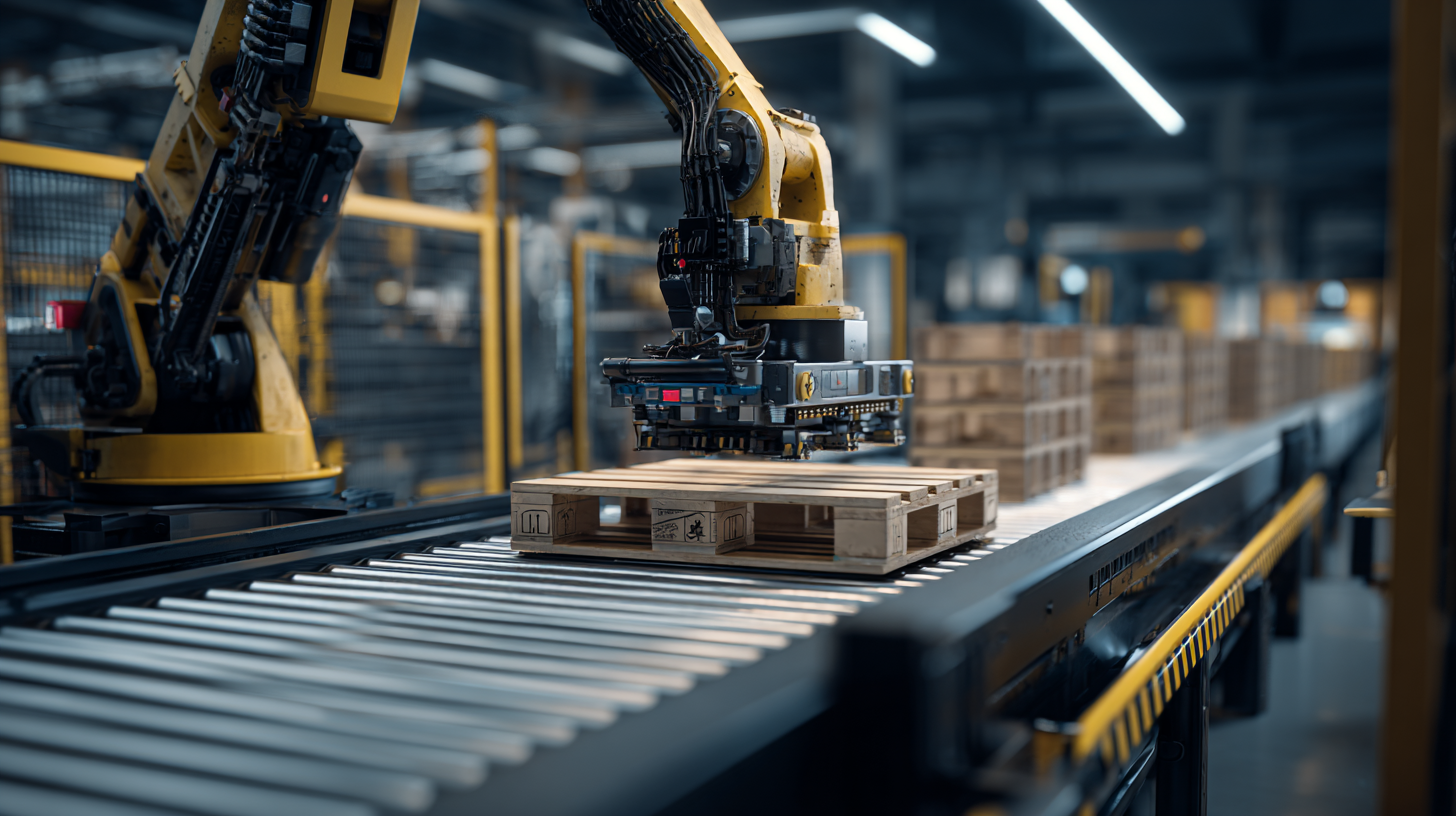The Future of Automated Solutions: Elevating Efficiency with the Best Auto Palletizer
As industries globally strive for enhanced operational efficiency, the role of automated solutions has become increasingly significant, particularly with innovations like the Auto Palletizer. According to a report by Grand View Research, the global palletizing equipment market size was valued at USD 3.15 billion in 2020 and is projected to expand at a compound annual growth rate (CAGR) of 4.8% from 2021 to 2028. This growth is driven by the rising demand for automation across various sectors such as food and beverage, pharmaceuticals, and consumer goods. China's commitment to high-quality manufacturing positions it as a vital partner in this ecosystem, offering advanced Auto Palletizer systems that not only streamline packaging processes but also enhance overall productivity. As companies seek to minimize labor costs and maximize throughput, investing in state-of-the-art automated solutions is essential for maintaining a competitive edge in the evolving marketplace.

Exploring the Evolution of Automated Palletizing Solutions in Industry
In recent years, the evolution of automated palletizing solutions has reshaped the landscape of various industries, driving increased efficiency and productivity. According to a report from MarketsandMarkets, the automated palletizing market is expected to grow from $3.7 billion in 2021 to $6.2 billion by 2026, at a compound annual growth rate (CAGR) of 10.5%. This growth is fueled by the rising demand for efficient supply chain processes and the need for reducing manual labor costs.
As industries integrate advanced technologies like robotics and artificial intelligence into their operations, the capabilities of automated palletizers have significantly improved. Modern solutions are not only faster, capable of stacking products at rates of over 120 bags per minute, but they also offer greater flexibility in handling various product types and sizes. Additionally, according to the International Federation of Robotics, the adoption of robotics in manufacturing is projected to increase by 14% per year, underscoring the critical role of automated palletizers in enhancing operational workflows. This drive towards automation not only secures cost savings but also elevates overall production safety, minimizing the risk of workplace injuries associated with manual palletizing processes.
The Future of Automated Solutions: Elevating Efficiency with the Best Auto Palletizer
| Automation Solution | Industry Type | Efficiency Gain (%) | Installation Time (Hours) | Annual Maintenance Cost ($) |
|---|---|---|---|---|
| Automatic Palletizer A | Food and Beverage | 30 | 24 | 5000 |
| Robotic Palletizer B | Consumer Goods | 40 | 36 | 7000 |
| Palletizing System C | Pharmaceuticals | 35 | 30 | 6000 |
| High-speed Palletizer D | Beverage | 50 | 40 | 8000 |
| Compact Palletizer E | Electronics | 45 | 20 | 5500 |
Key Features to Look for in High-Performance Auto Palletizers
When considering the future of automated solutions, particularly in the realm of material handling, the importance of high-performance auto palletizers cannot be overstated. These machines not only streamline operations but also significantly enhance overall efficiency. When evaluating auto palletizers, key features to look for include adaptability, speed, and precision. An efficient auto palletizer should seamlessly integrate with existing processes, accommodating various product sizes and packaging types without the need for extensive modifications.
Furthermore, the speed of operation is critical; high-performance models can handle large volumes of goods quickly, minimizing downtime and increasing throughput. Precision is another essential characteristic, as mismatched palletizing can lead to damaged goods and increased labor costs for rework. Look for models equipped with advanced sensors and software that ensure accurate placement of products, thereby optimizing the pallet formation. Investing in an auto palletizer with these key features will not only provide immediate efficiency gains but also position your operations for future growth and scalability.

How Automated Palletizers Enhance Operational Efficiency and Productivity
Automated palletizers have become indispensable in modern logistics and manufacturing environments, significantly enhancing operational efficiency and productivity. By automating the palletizing process, businesses can drastically reduce the time and labor costs associated with manual palletization. This allows for quicker turnaround times and a smoother workflow, enabling companies to meet increasing demands without compromising quality or safety.
Moreover, these advanced machines are designed to handle varying types of products, from boxes to bags, ensuring versatility in operations. The integration of smart technology allows automated palletizers to adapt to changes in product lines and packaging styles, further optimizing the process.
Real-time data collection and analysis enable businesses to monitor performance, ensuring continuous improvement and minimizing downtime. As industries increasingly shift towards automation, investing in the best auto palletizer is pivotal for companies aiming to stay competitive in today’s fast-paced market.
Future Trends in Automation: The Role of AI and Robotics in Palletizing
The future of automated solutions, particularly in palletizing, is heavily influenced by advancements in AI and robotics. The automation landscape is evolving rapidly, with predictions suggesting that the global market for smart robotics could reach approximately $31.1 billion by 2027, growing at a compound annual growth rate of 23.1% between 2020 and 2027. This growth echoes the increasing integration of digital technologies in various industrial sectors, including manufacturing and logistics.
One prominent trend is the shift toward fully automated warehouses, where technologies such as autonomous mobile robots (AMRs) are streamlining operations. These robots are equipped with advanced sensors that enable obstacle avoidance, ensuring safe and efficient handling of goods. As highlighted in recent trends, the deployment of digital and automated solutions not only enhances productivity but also supports a seamless workflow from order processing to shipping. The increasing need for efficiency and reliability in manufacturing processes is driving the adoption of these intelligent systems, ultimately paving the way for a new era in automated palletizing solutions.
The Future of Automated Solutions: Elevating Efficiency with Auto Palletizers
This chart illustrates the projected efficiency improvements of automated palletizers over the next five years, highlighting the role of AI and robotics in enhancing operational productivity.
Case Studies: Successful Implementations of Automated Palletizing Solutions
The adoption of automated palletizing solutions is transforming the logistics and manufacturing sectors, as evidenced by numerous successful implementations across various industries. For instance, according to a report by the Robotics Industries Association, the market for industrial robots, including auto palletizers, is projected to grow by 14% annually until 2025. This surge is largely due to the need for increased efficiency and reduced operational costs. Companies that have integrated automated palletizers report up to a 30% increase in productivity while minimizing labor costs and reducing the risks associated with manual handling.
A compelling case study involves a leading beverage manufacturer that implemented an advanced robotic palletizing system. After deployment, the company experienced a significant reduction in product damage during the palletizing process, decreasing from 5% to just 1%. Additionally, the automated system enabled the facility to enhance throughput, allowing for an estimated 50% more cases to be handled per hour. These real-world applications highlight how automated solutions are not only streamlining operations but also providing measurable returns on investment for businesses looking to stay competitive in a rapidly evolving market.

